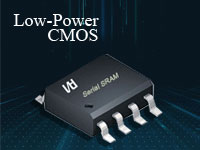The development status of PCB industry in different countries
As early as the mid-1980s, there were more than 1,400 PCB manufacturers in Europe. In 2000, there were 780 in the United States and about 250 in Japan. The numbers in the United States and Japan have decreased due to bankruptcies and mergers and acquisitions.
Now, about 55% of the world's PCB manufacturers are in mainland China, which includes about 150 foreign-invested factories, for example, there are about 100 Taiwanese-funded manufacturers in the mainland (some of them do not have factories in Taiwan). Japan has about 20 manufacturers in China and three in the United States.
By region, revenue in Mainland China increased by 14.5% year-on-year, and the number of companies entering NTI-100 increased by 4 to 56 in 2020. China's production capacity is rapidly approaching Taiwan.
South Korea’s strong growth comes from IC substrates and flexible printed circuits (FPC). The country’s factories are mainly in Vietnam.
Compared with China and South Korea, Japan's growth rate is very small. However, starting from 2021, with the support of more than US$4 billion in investment, Japan's IC substrate production is expected to grow rapidly in the next few years.
The U.S. experienced negative growth because TTM Technologies sold its mobile business to AMK Meadville for $550 million in 2020.
Europe's revenue mainly comes from the growth of AT&S.
Southeast Asian manufacturers rely on the power of KCE, MFS and Gul Technology to grow and develop.
Taiwanese manufacturers are mixed, with IC substrate manufacturers performing well, but the overall performance of manufacturers mainly engaged in automotive PCBs has been poor, and motherboard manufacturers engaged in personal computers, tablets, wearable devices and smartphones have performed well.
Now, about 55% of the world's PCB manufacturers are in mainland China, which includes about 150 foreign-invested factories, for example, there are about 100 Taiwanese-funded manufacturers in the mainland (some of them do not have factories in Taiwan). Japan has about 20 manufacturers in China and three in the United States.
By region, revenue in Mainland China increased by 14.5% year-on-year, and the number of companies entering NTI-100 increased by 4 to 56 in 2020. China's production capacity is rapidly approaching Taiwan.
South Korea’s strong growth comes from IC substrates and flexible printed circuits (FPC). The country’s factories are mainly in Vietnam.
Compared with China and South Korea, Japan's growth rate is very small. However, starting from 2021, with the support of more than US$4 billion in investment, Japan's IC substrate production is expected to grow rapidly in the next few years.
The U.S. experienced negative growth because TTM Technologies sold its mobile business to AMK Meadville for $550 million in 2020.
Europe's revenue mainly comes from the growth of AT&S.
Southeast Asian manufacturers rely on the power of KCE, MFS and Gul Technology to grow and develop.
Taiwanese manufacturers are mixed, with IC substrate manufacturers performing well, but the overall performance of manufacturers mainly engaged in automotive PCBs has been poor, and motherboard manufacturers engaged in personal computers, tablets, wearable devices and smartphones have performed well.
CONTACT US
USA
Vilsion Technology Inc.
36S 18th AVE Suite A,Brington,Colorado 80601,
United States
E-mail:sales@vilsion.com
Europe
Memeler Strasse 30 Haan,D 42781Germany
E-mail:sales@vilsion.com
Middle Eastern
Zarchin 10St.Raanana,43662 Israel
Zarchin 10St.Raanana,43662 Israel
E-mail:peter@vilsion.com
African
65 Oude Kaap, Estates Cnr, Elm & Poplar Streets
Dowerglen,1609 South Africa
E-mail:amy@vilsion.com
Asian
583 Orchard Road, #19-01 Forum,Singapore,
238884 Singapore
238884 Singapore
E-mail:steven@vilsion.com
